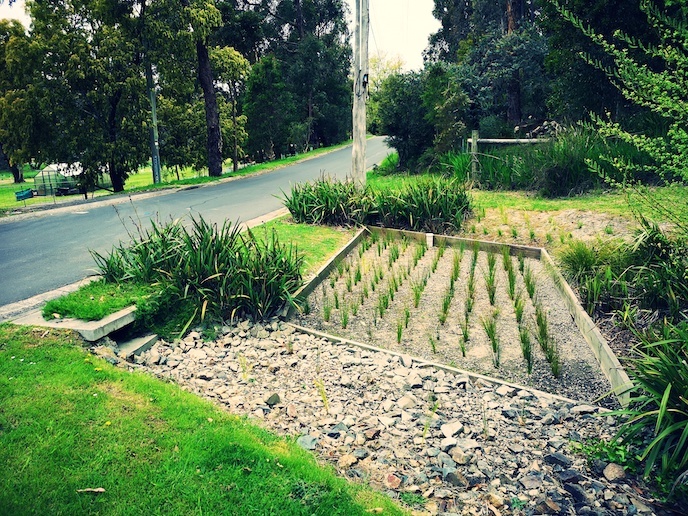Asset management for nature-based city flood resilience
When flooding is caused by storm water it often reflects drainage infrastructure designed to fight nature, rather than work with it. Recently there has been a shift from flood controls based on costly and maintenance-intensive ‘grey’ (constructed) drainage networks, to hybrid systems incorporating nature-based solutions. These not only restore permeability to cities by managing rain at source – reducing flood risk while increasing groundwater availability – but also benefit the environment. Popular assets include rain gardens, street swales or tree pits. Each solution’s variety of shape and composition makes it readily adapted to local contexts. “But the advantage of these nature-based solutions – their diversity and adaptability – often proves their weakness, as they require tailor-made management,” says research fellow Frédéric Cherqui from the Marie Skłodowska-Curie Actions supported project Mind4Stormwater. “And as these assets are still young, mostly under 30 years old, their long-term performance and requirements are relatively unknown.” Mind4Stormwater adapted recent low-cost, connected and open-source monitoring systems to water infrastructure, to help build market trust in these solutions, while generating knowledge about their long-term performance.
The expert platform
While the scientific evidence is compelling for the benefits accrued from complementing ‘grey’ (piped) infrastructure with nature-based solutions, trust must first be built in these solutions before widespread adoption, especially by city authorities. “Hybrid solutions need different management approaches. They are more discontinuous and widespread than grey infrastructure, and can be multifunctional, requiring competencies in both civil engineering and ecosystem science,” adds Cherqui from Lyon 1 University, the project host. Monitoring infrastructure has traditionally been labour-intensive and expensive, but recent technological advances – driven by falling costs, miniaturisation, ease-of-access, modularity and open-source programming – offer real-time data gathering solutions. Mind4Stormwater demonstrated the whole monitoring chain; from sensor development and installation, to data visualisation and real-time alerts. After lab testing, the team designed and installed monitoring systems in partnership with Melbourne Water in Australia and Greater Lyon in France. Deployment included highly urbanised areas (such as Melbourne and Lyon) and a remote location (Officer, Australia), covering a range of solutions including wetland, green roof and stream. Online platforms for the Australian and French pilots gathered sensor information, such as water levels, water turbidity, rain quantity and environmental features such as air temperature and humidity, supplying direct and indirect performance data. Users could visualise or download the data in near real time – every 5 to 30 minutes, depending on configuration. Alerts were set up for unexpected situations, related to the solution or the monitoring system itself.
Encouraging ‘hydrocitizenship’
Mind4Stormwater contributes directly to the EU Green Deal aspiration of making cities more sustainable. “It is a business opportunity, offering green jobs for monitoring system manufacturers, installers and managers, not to mention the market in data,” notes Cherqui. “As these assets are often outside, it is an opportunity to engage citizens, with free and easy access to monitoring data a first step to raising awareness about water management.” Mind4Stormwater’s knowledge, data and material is open-source and widely available. The team continue to assess the benefits of these drainage solutions which will require years of additional testing. While doing so they will capitalise on constantly evolving communication, sensing and big data innovations. Additionally, the environmental impact of the monitoring system itself will be evaluated, including the possibility of integrating organic electronics. Building on the results of Mind4Stormwater, the EU-funded Co-UDlabs project is now also advancing knowledge and innovation for urban drainage systems.
Keywords
Mind4Stormwater, flooding, resilience, drainage, nature-based, grey infrastructure, monitoring, Green Deal, water levels, rain, cities



